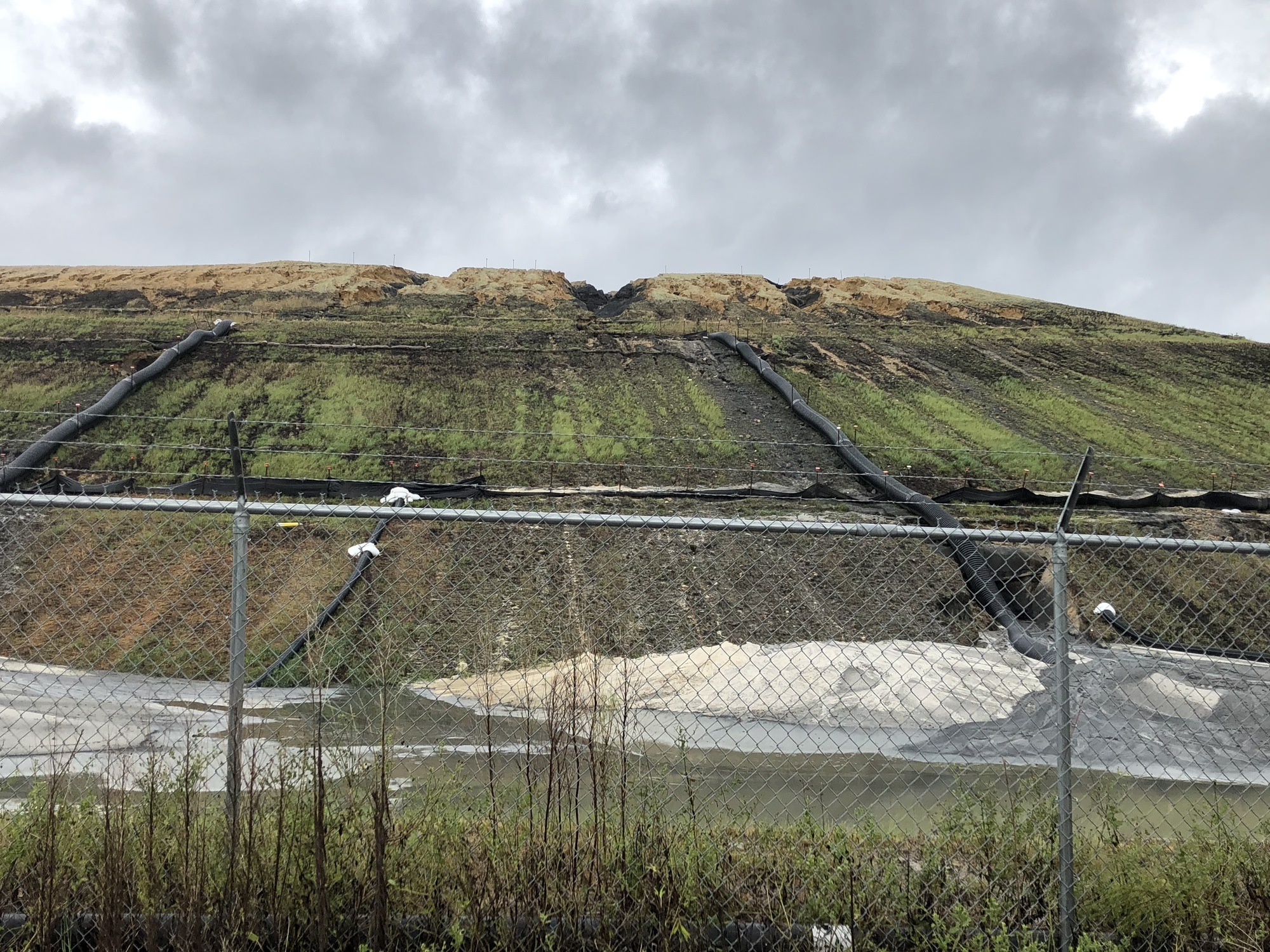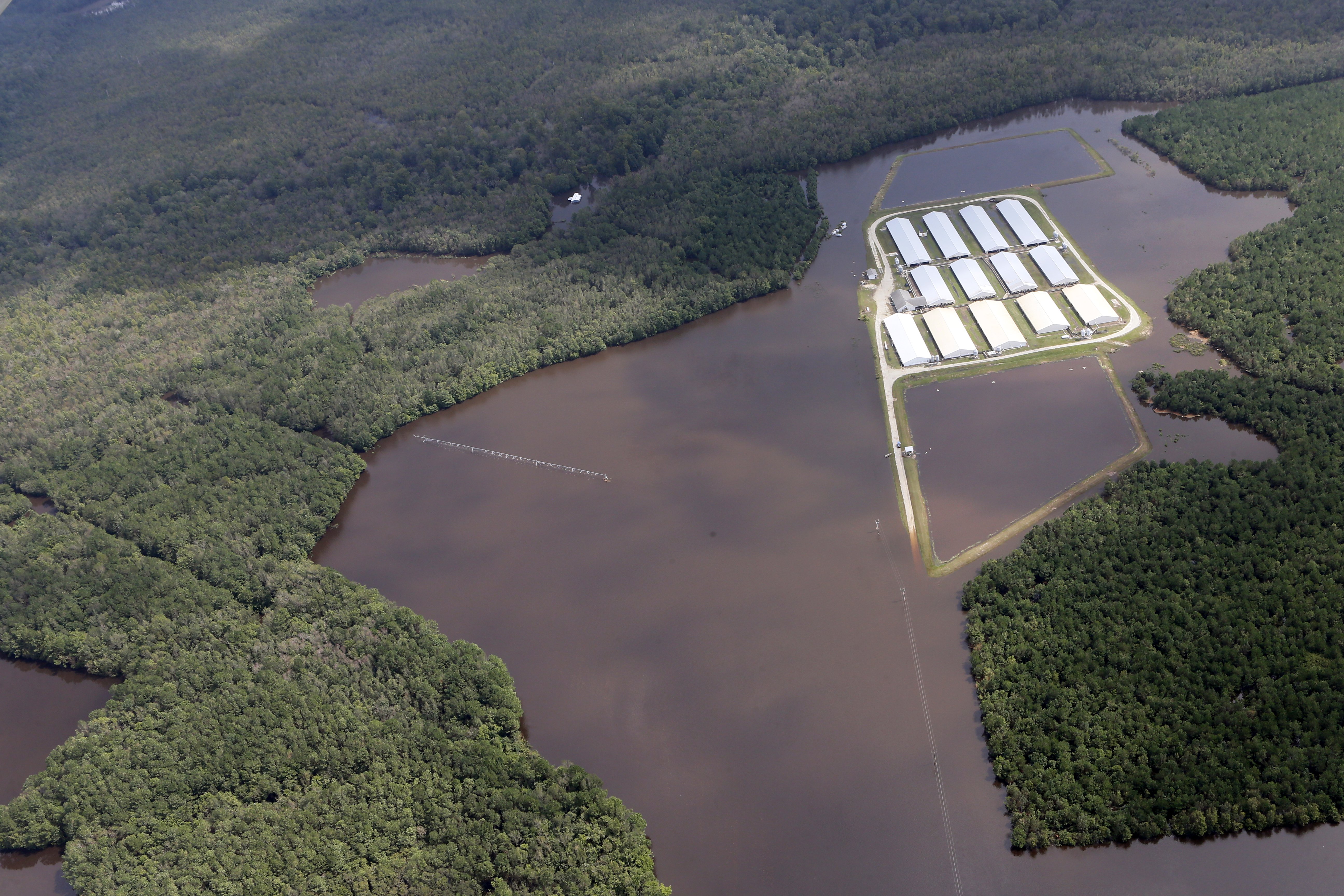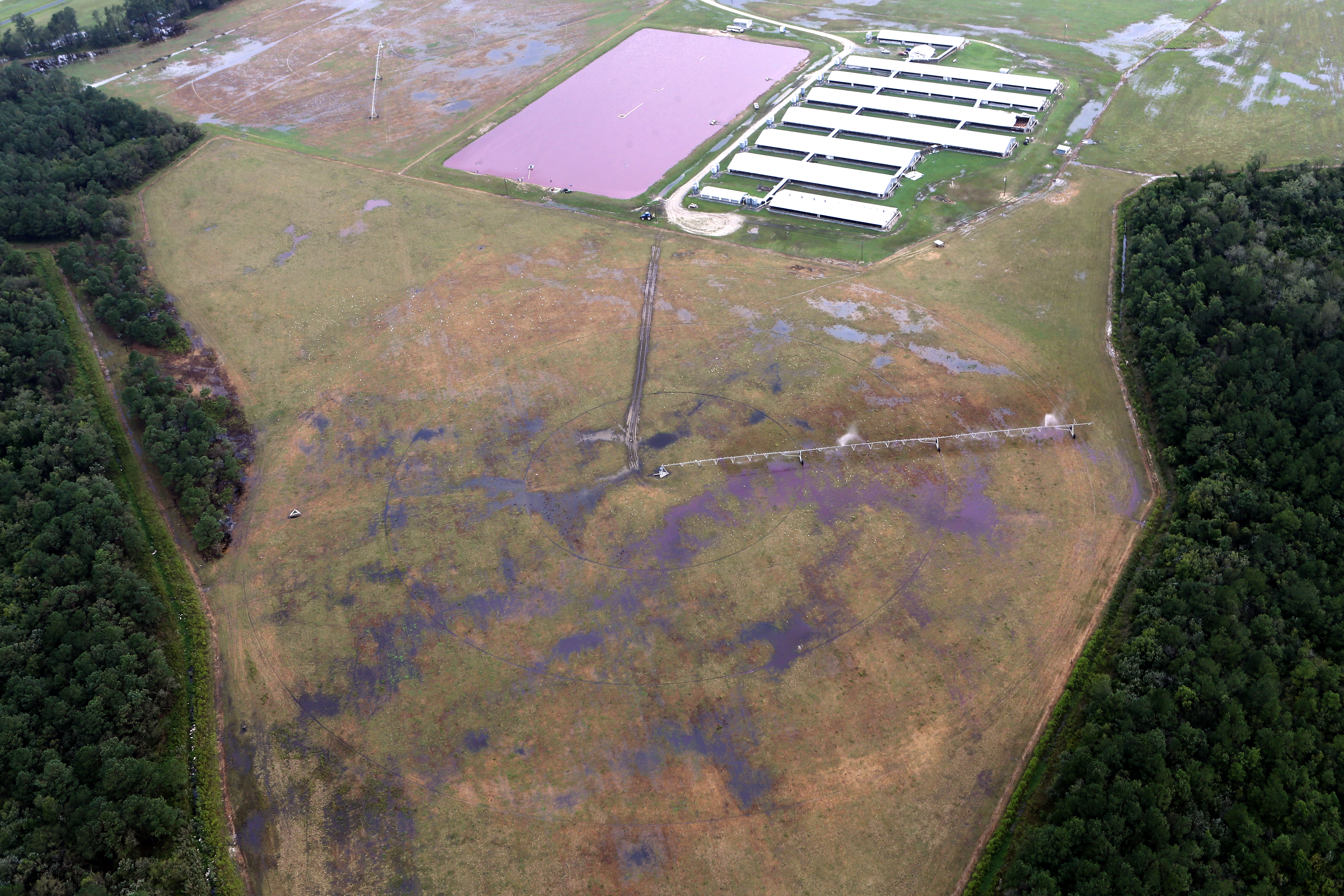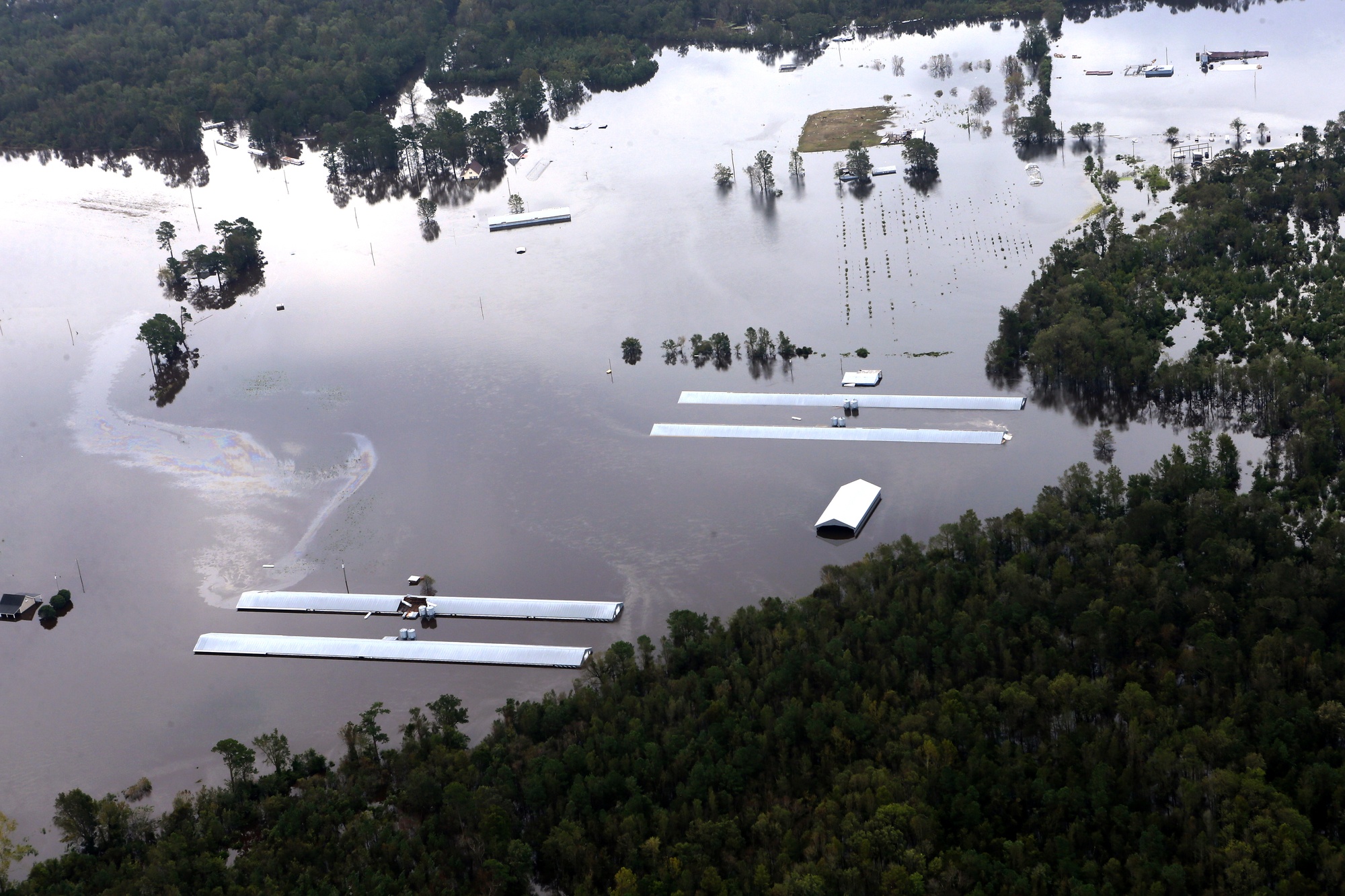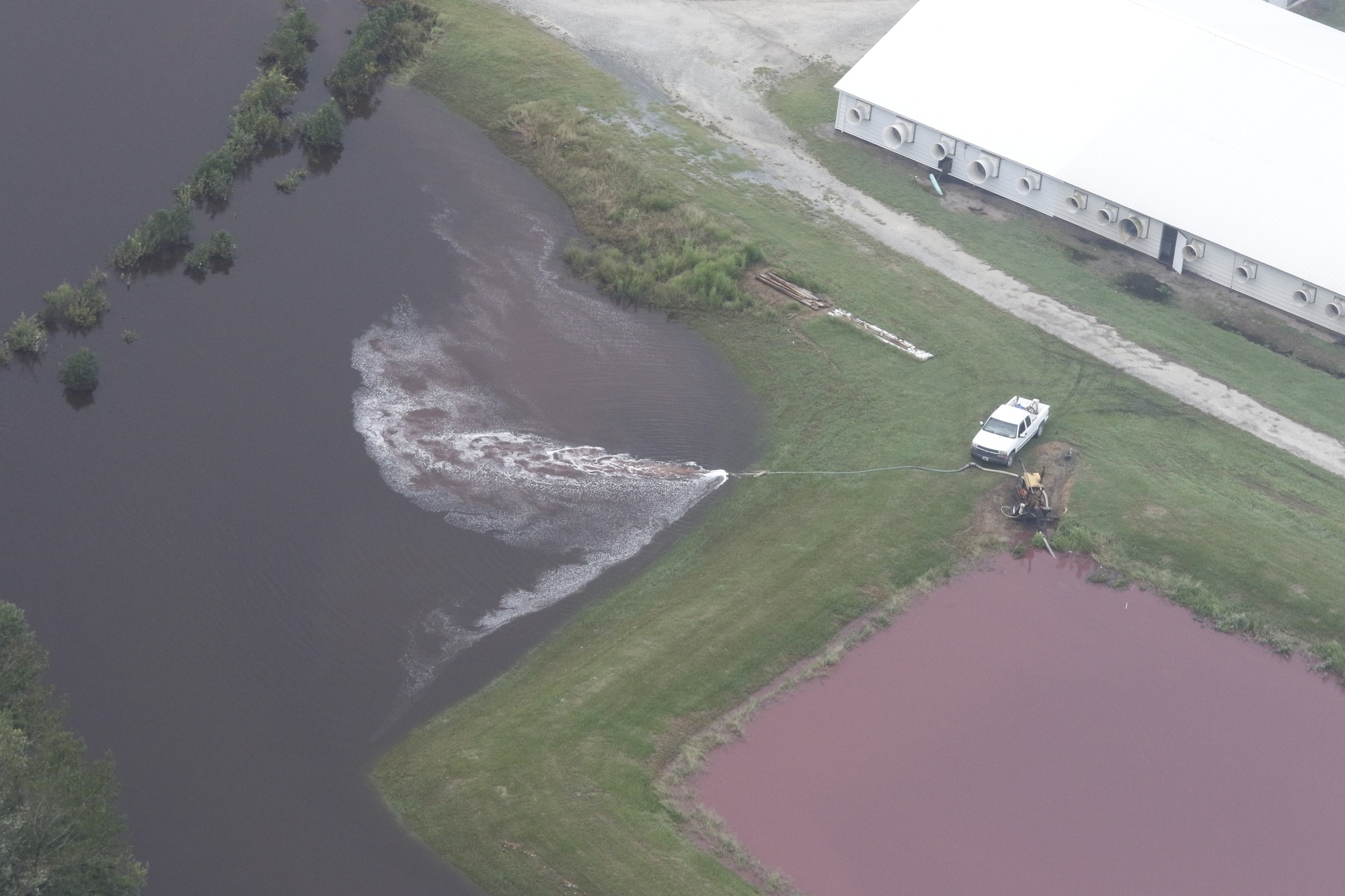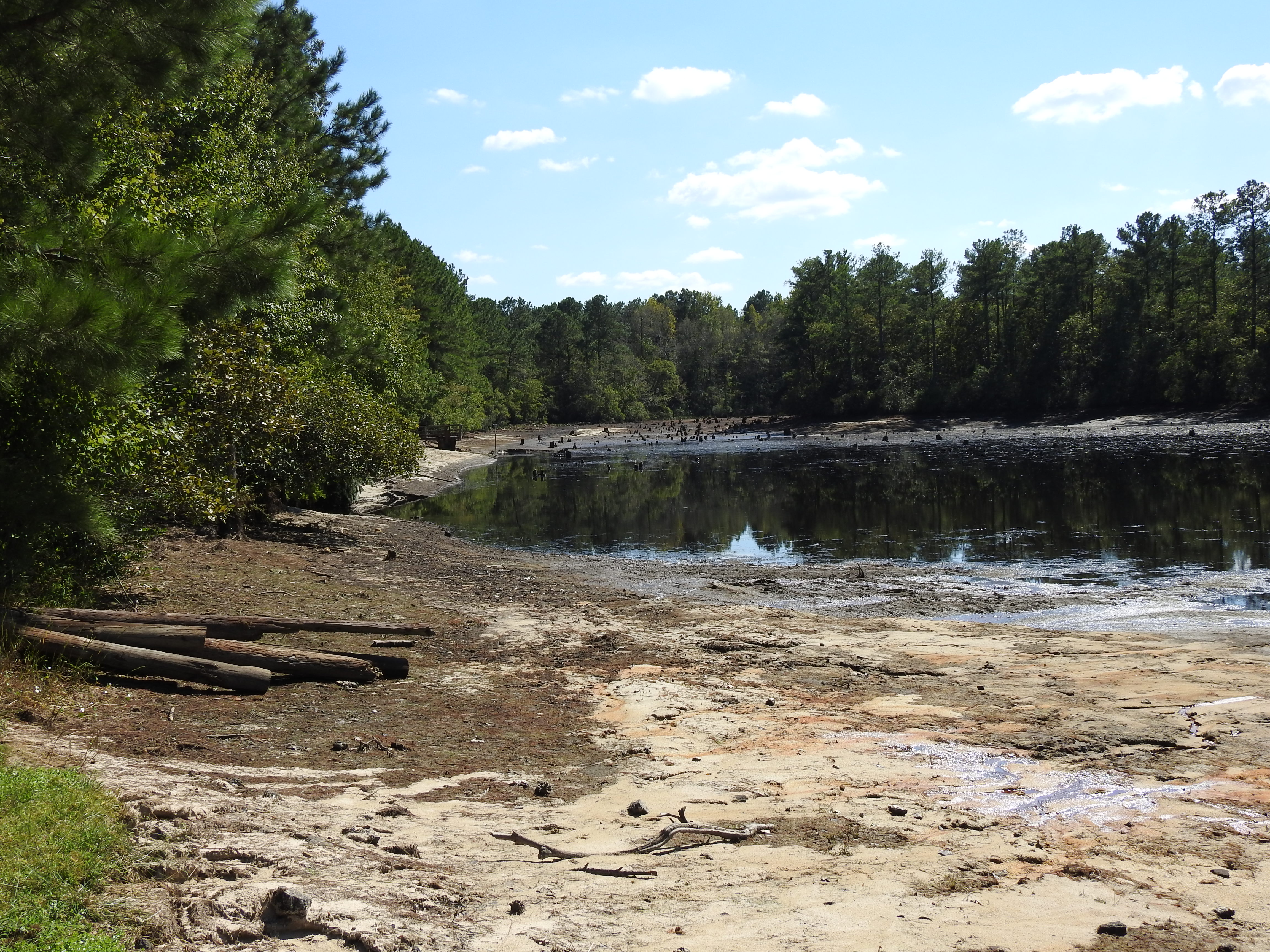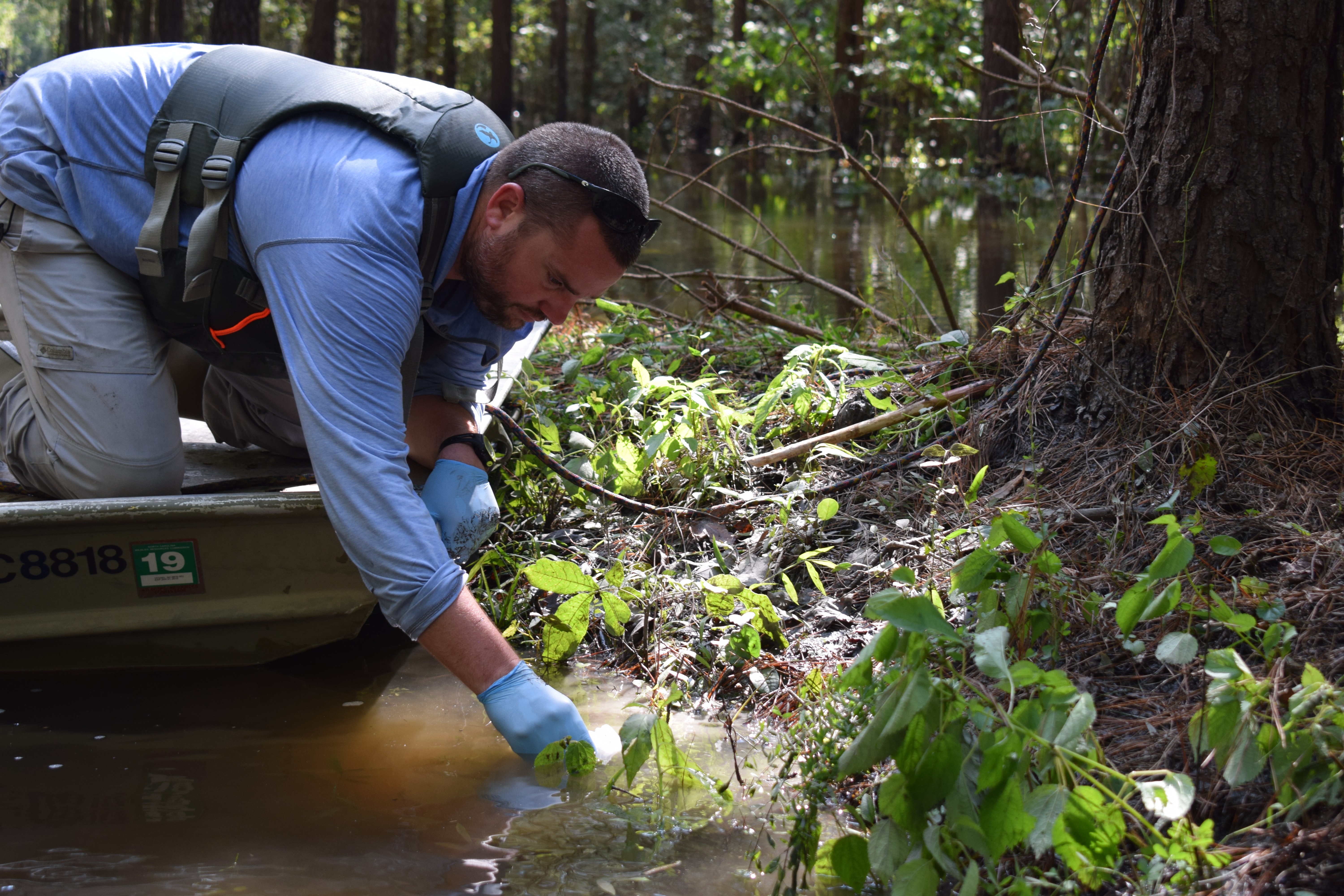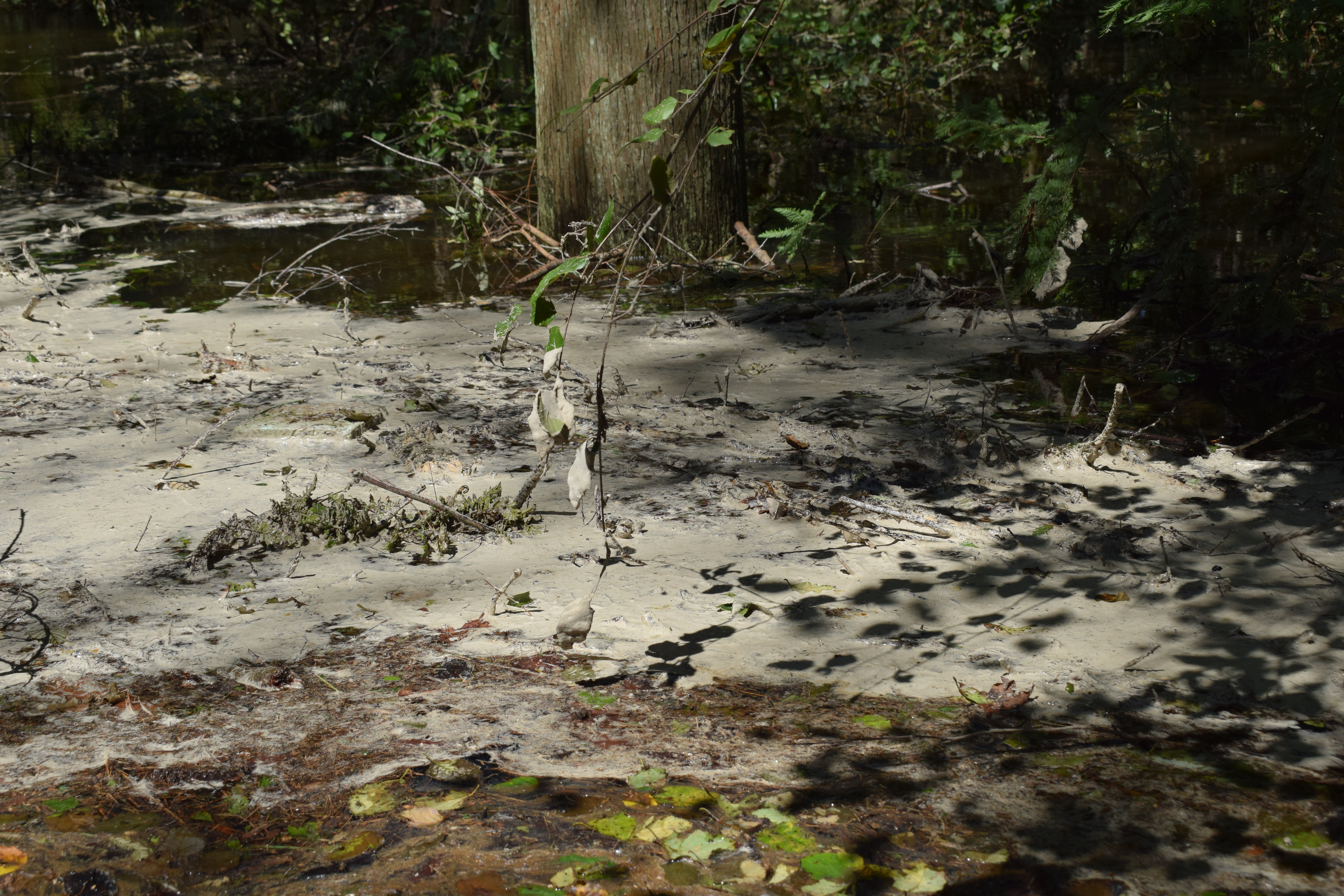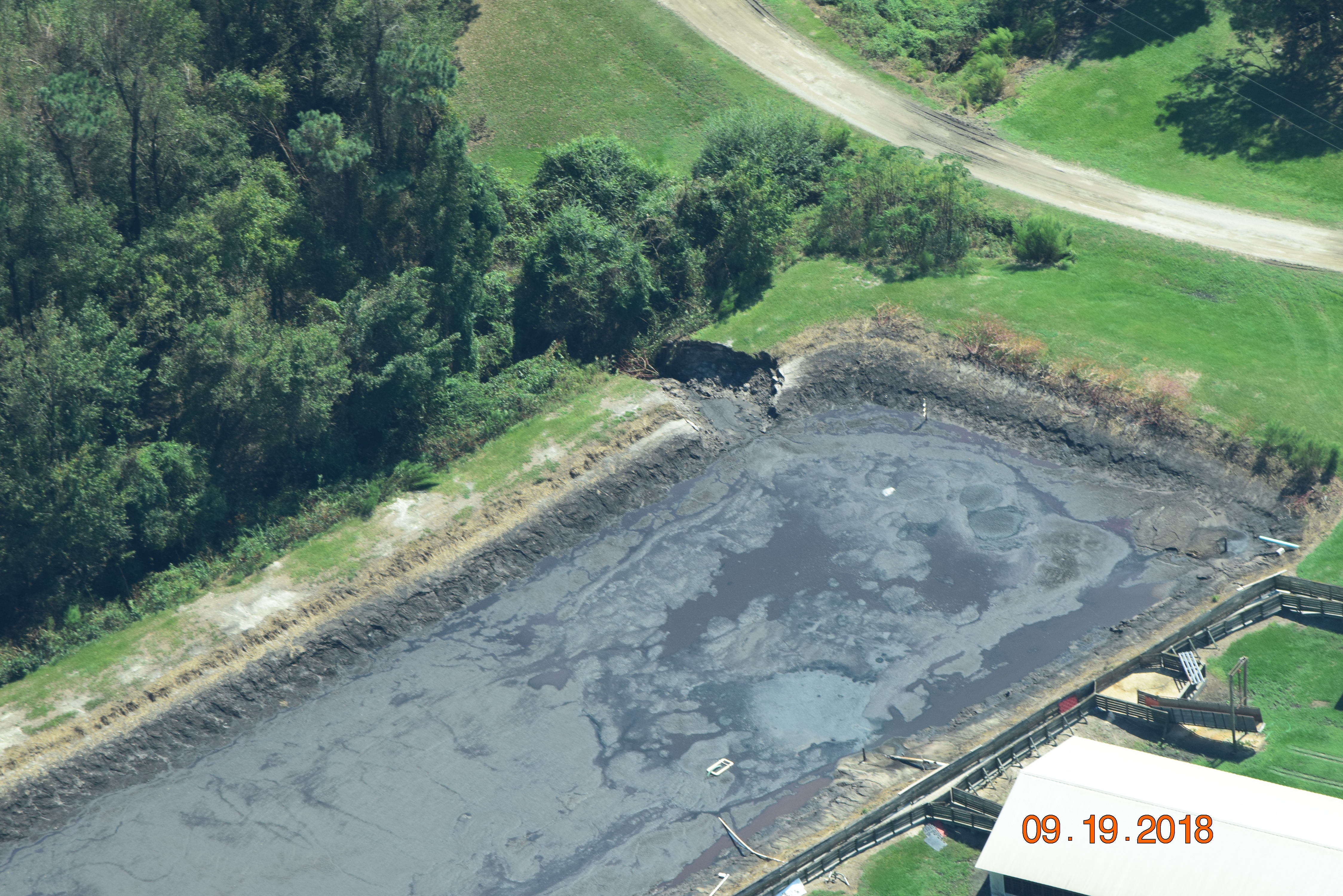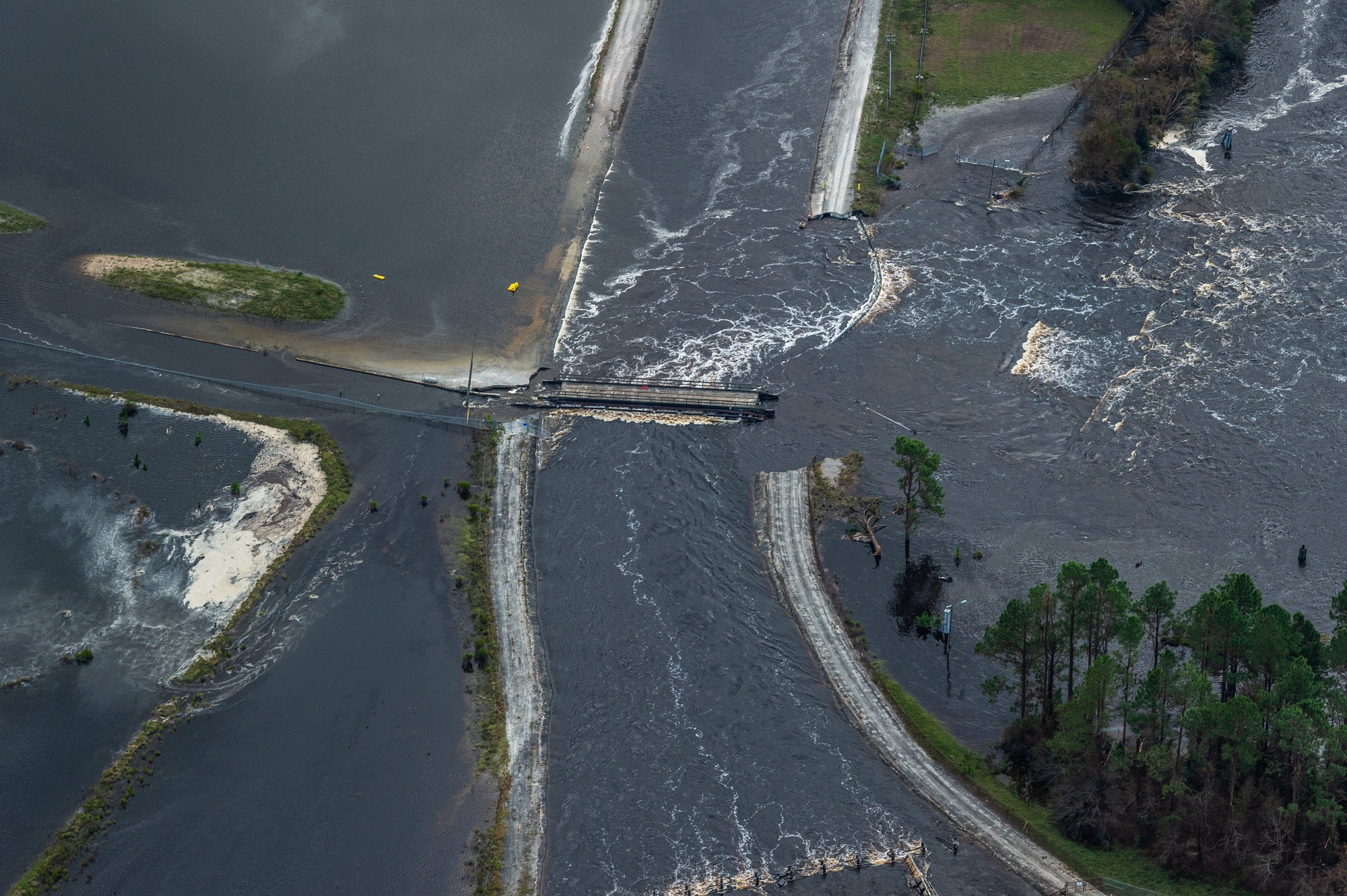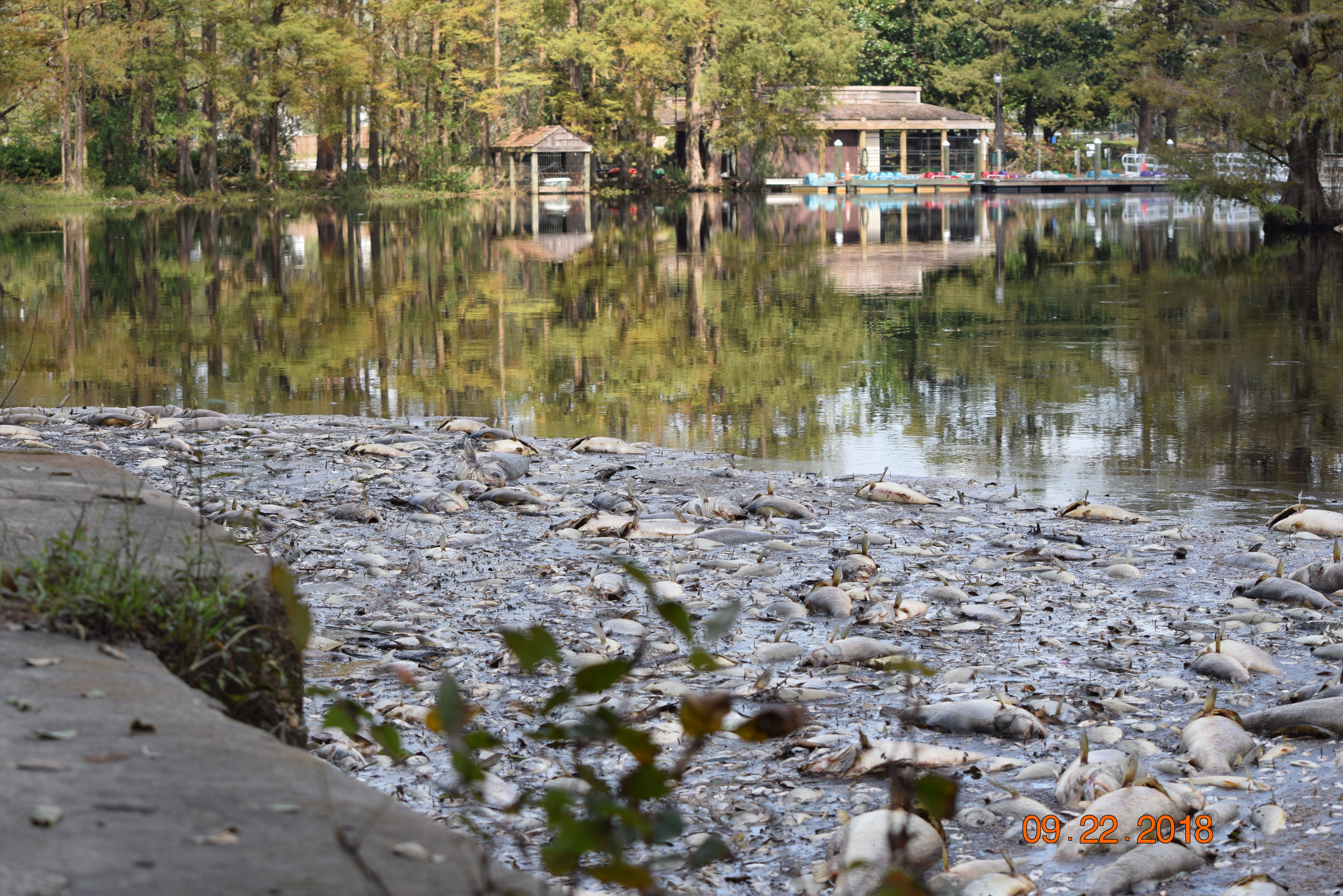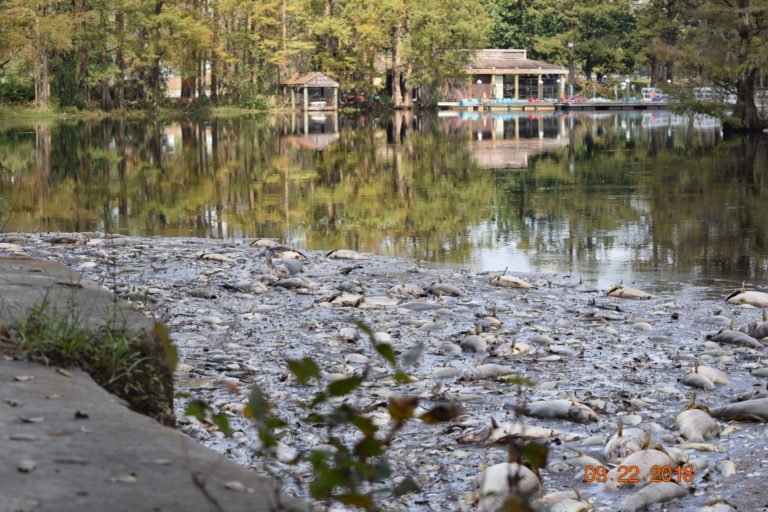
Waterkeeper Alliance and Waterkeeper groups in the Carolinas documented the devastating aftermath of Hurricane Florence. As soon as it was safe to do, Waterkeepers were in the air, on the ground, and on the waters monitoring conditions at coal ash pits, industrial swine and poultry operations, and other pollution threats to the states’ waterways.
Disasters like Florence are a stark reminder that climate change is increasing the frequency and intensity of deadly storms. This is the second 500-year storm to strike the Carolinas in two years. Human-caused warming of the planet leads to warmer oceans, which provide energy to fuel stronger hurricanes with higher wind speeds. Warmer air holds more moisture and leads to greater rainfall. This human-caused warming, a study reveals, lead to Florence bringing 50% more rainfall than otherwise predicted.
The Waterkeeper Alliance Rapid Response initiative—applied during Hurricane Florence—provides trusted and independent information following disasters that impact our waterways. In light of lax federal regulations as well as budget cuts to state environmental agencies, the need has never been greater for Waterkeeper Organizations and Affiliates to speak the truth about devastating impacts of water emergencies on communities. Waterkeeper groups will remain involved as long as necessary in order to assure that proper clean-up, mitigation, and enforcement is completed.
You can help communities in the Carolinas with a donation to Waterkeeper Alliance’s flood relief efforts.
September 16, 2018 | Cape Fear Riverkeeper Kemp Burdette discovered at least two sections of Duke Energy’s L.V. Sutton Power Plant coal ash landfill, located in Wilmington, NC, with overflows. Photo by Cape Fear Riverkeeper.
September 17, 2018 | A concentrated animal feeding operation (CAFO) producing hogs floods during Hurricane Florence. Photo by Rick Dove, Waterkeeper Alliance.
September 17, 2018 | A CAFO in North Carolina sprays animal waste on a nearby saturated field. Photo by Rick Dove, Waterkeeper Alliance.
September 17, 2018 | A poultry CAFO in Duplin, NC, floods during Hurricane Florence. Photo by Rick Dove, Waterkeeper Alliance.
September 17, 2018 | A CAFO operator pumps waste out of a cesspool directly into floodwaters in Duplin, NC.
September 18, 2018 | Hogs are seen inside a swine CAFO in Wallace, NC, as floodwaters from Hurricane Florence surround them. Photo by Larry Baldwin, Crystal Coast Waterkeeper.
September 19, 2018 | Lake Darpo in Darlington, SC, after its dam failed. The South Carolina Department of Health and Environmental Control confirmed that eleven dams failed in the state in the week following Hurricane Florence; bringing the total dam failures in the state to more than 80 in three years. Photo by Bill Stangler, Congaree Riverkeeper.
September 19, 2018 | Upper Neuse Riverkeeper Matthew Starr collects a water sample. Staff from Waterkeeper Alliance, Sound Rivers, Haw Riverkeeper, and French Broad Riverkeeper discovered multiple releases of coal ash from inundated ponds at Duke Energy’s H.F. Lee coal-fired power plant near Goldsboro, NC.
September 19, 2018 | Waterkeeper Alliance and Waterkeeper groups across North Carolina identified multiple active coal ash spills from Duke Energy’s H.F. Lee facility where one million tons of coal ash was completely underwater as a result of flooding from Hurricane Florence.
September 19, 2018 | Cape Fear Riverkeeper Kemp Burdette discovered this breached hog lagoon located in the Cape Fear River Basin with its contents (waste from an industrial animal operation) completely emptied. Photo by Kemp Burdette, Cape Fear Riverkeeper.
September 21, 2018 | A massive structural failure at Duke Energy’s L.V. Sutton Power Plant contaminates the Cape Fear River with coal ash. Photo by Jo-Anne McArthur.
September 22, 2018 | Cape Fear River Watch, home of Cape Fear Riverkeeper, operates a boathouse for eco-tours on Greenfield Lake near historic downtown Wilmington, NC. But days after Hurricane Florence, this popular recreation destination was marred by the scene of fish carcasses floating near the shore, with nearby waters roiling with struggling survivors. This fish kill was likely caused by low dissolved oxygen levels, a common result of nutrient pollution, a problem exacerbated by stormwater runoff.
Catawba Riverkeeper Sam Perkins created this story map to give the public a sense of environmental hazards that might be vulnerable to flooding.
You can view more of Waterkeeper Alliance’s photos and video from Hurricane Florence here.
